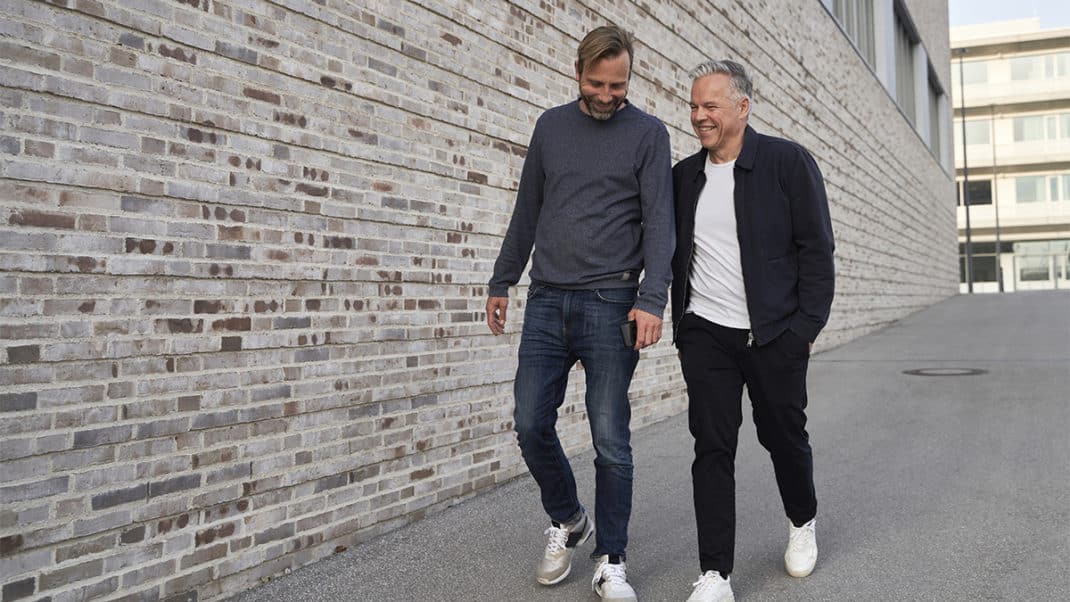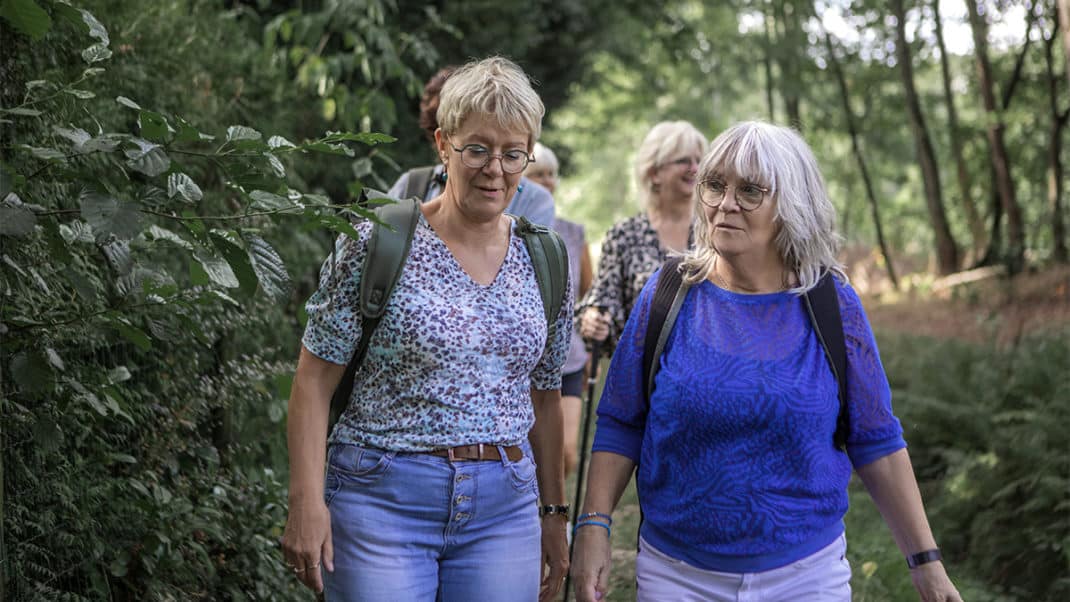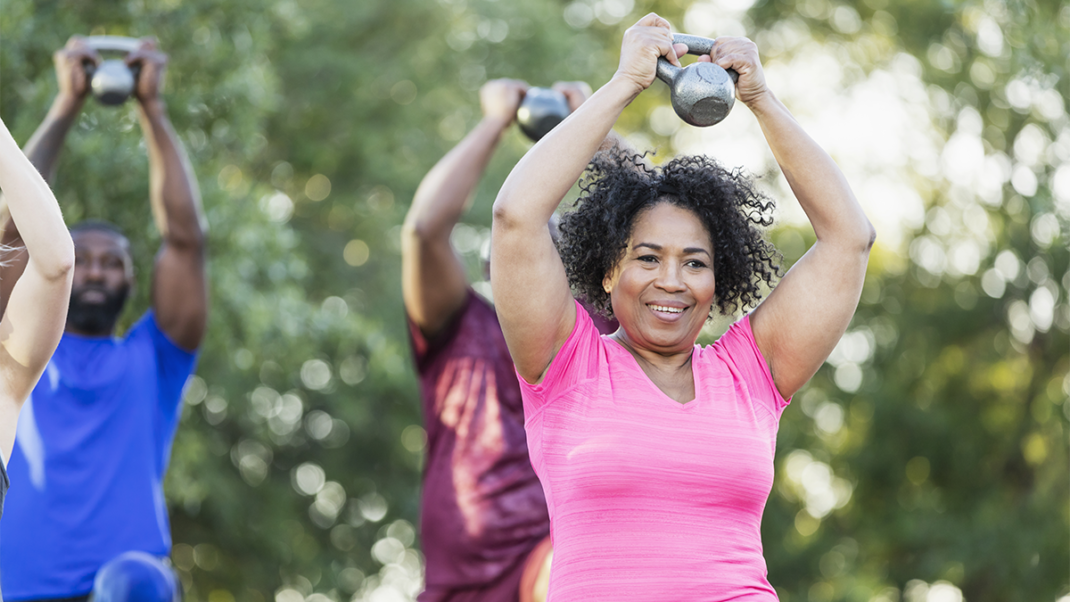Walking Speed: A Predictor of Functional Health
Studies explain why brisk walking can improve the health of older exercisers.

Thanks to a spike in pace-related research over the past decade, we now know that walking speed is a significant vital sign for older clients. Study findings have associated slow walking speed with a heightened risk of mortality in older adults, while brisk walking has been linked to better health (Franklin et al. 2015).
These are important insights because, until recently, researchers had no idea that walking speed was such a strong vital-sign predictor. Connections between walking speed and health improvements make a persuasive case for helping older clients pick up the pace. Let’s look at the science that uncovered these fresh insights on walking speed.
Walking Speed and Functional Health
Walking pace provides a crucial clue to the functional status of older adults (Verghese, Wang & Holtzer 2011). Functional status means ability to do the activities of daily living, such as bathing, dressing, cooking, feeding, shopping, driving and using public transportation.
Verghese and colleagues explain that gait speed is a clinical marker of functional status in older adults, integrating health, disease, fitness and emotional state. In a later review, Middleton, Fritz & Lusardi (2015) point to data linking slower walking speeds with frailty, functional dependence, mobility disability, cognitive decline, falls, hospitalization and all-cause mortality.
Franklin et al. add that slower walking speeds are also associated with cancer conditions and with inflammation resulting from diseases and other medical issues. Verghese’s team observes that variables such as fitness level, cognition and mood can influence gait speed.
Why Does Gait Speed Predict Survival?
Studenski et al. (2011) note that walking requires enough energy to move, control balance and support the body in motion, placing demands on the heart and lungs, as well as the nervous, musculoskeletal and circulatory systems. Because the body needs all of these systems to survive, gait speed is a straightforward vitality indicator. Reductions in gait speed may reflect damage to major bodily systems, leading to deconditioning and a drop in physical activity—outcomes that directly affect an older person’s health and survival.
See also: Faster Walking After a Stroke
What Is the Best Walking Speed for Survival?
Researchers are still fine-tuning their estimates of the optimum gait speed for improving survival among older exercisers. Research points to the health indicators of various walking speeds in adults 65 and older:
- Speeds ≤ 1.3 miles per hour suggest poor health and functional status.
- A speed of 1.8 mph is the median walking pace for this population.
- Speeds ≥ 2.2 mph suggest healthier aging.
- Speeds ≥ 2.7 mph indicate an “exceptional life expectancy, but additional research will be necessary to determine this relationship” (Studenski et al. 2011).
Franklin and team also suggest that brisk walking at 3 mph or more may enhance survival. They note that walking faster than 3 mph has a metabolic equivalent of more than 3.3 METs (a MET is the equivalent of 3.5 milliliters of oxygen per kilogram of body weight per minute). Older adults who continuously walk at this pace typically have an aerobic fitness capacity of >5 METs, which is associated with reduced mortality risk (Franklin et al. 2015). Furthermore, each 1-MET increase in aerobic fitness capacity has been associated with a reduction of approximately 15% in all-cause and cardiovascular-disease mortality (Franklin et al. 2015).
How Do We Measure Walking Speed?
Medical clinics use a stopwatch to clock patients’ pace. From a standing start, patients are asked to walk 13–20 feet at their usual pace, with no further encouragement or instructions. As a fitness professional, you can easily and accurately determine a client’s average walking pace with a treadmill. Instruct the client to set the treadmill speed to his or her normal walking pace, and then periodically recheck the client’s pace to note any changes.
See also: Taking the Right Step—Walking Research for the Ages
Implications for Personal Trainers
Sedentary lifestyles have repeatedly been linked to increased risk for coronary heart disease (Franklin et al. 2015). And as the research cited here suggests, encouraging 65-and-over clients to add more brisk-paced walking can improve vitality and enhance functional health. Brisk walking can also be part of a strategy outlined in the January Fitness Journal Research column: moving for 3 minutes out of every 30 minutes of waking behavior. That works out to 96 active minutes for someone who sleeps 8 hours.
In Table 1, you will find six interval-walking workouts your adult clients can try in their 3-minute movement bouts. The intensity message for these clients is to move with a brisk walk that feels somewhat hard relative to their health status. Recovery speed should feel like light intensity. Take advantage of the numerous free interval apps for smartphones, or perhaps give clients a pedometer to track their walking and other activities.
As clients become consistently active, some may want to start a longer walking program. Seniors who walked 15 minutes a day (90 minutes a week) over 8 years enjoyed a 14% lower death rate than their inactive counterparts (Franklin et al. 2015). Encourage clients to walk continuously, accumulating 30 minutes of somewhat-hard walking minutes—such as two 15-minute walks or three 10-minute walks—on most days of the week. Research indicates that this walking strategy will produce even greater improvements in cardiovascular health and well-being (Franklin et al. 2015).
Brisk Is Better
Walking pace gives fitness pros an easy-to-use assessment of older exercisers’ functional health. Make sure older clients know that walking speed is an authentic vital sign, and encourage them to work their way up to a more energetic pace.
TABLE 1. SIX INTERVAL-WALKING WORKOUTS (EACH ∼3 MINUTES)
References
Franklin, B.A., et al. 2015. Reduced walking speed and distance as harbingers of the approaching grim reaper. American Journal of Cardiology, 116, 313–17.
Middleton, A., Fritz, S.L., & Lusardi, M. 2015. Walking speed: The functional vital sign. Journal of Aging and Physical Activity, 23 (2), 314–22.
Studenski, S., et al. 2011. Gait speed and survival in older adults. Journal of the American Medical Association, 305 (1), 50–58.
Verghese, J., Wang, C., & Holtzer, R. 2011. Relationship of clinic based gait speed measurement to limitations in community based activities in older adults. Archives of Physical Medicine and Rehabilitation, 92 (5), 844–46.
Len Kravitz, PhD
Len Kravitz, PhD is a professor and program coordinator of exercise science at the University of New Mexico where he recently received the Presidential Award of Distinction and the Outstanding Teacher of the Year award. In addition to being a 2016 inductee into the National Fitness Hall of Fame, Dr. Kravitz was awarded the Fitness Educator of the Year by the American Council on Exercise. Just recently, ACSM honored him with writing the 'Paper of the Year' for the ACSM Health and Fitness Journal.







